CATEGORIES
Kategorier
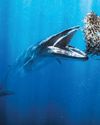
A jaw-dropping undersea snap
A photograph of a Bryde's whale feeding on a heart-shaped \"bait ball\" of sardines has won the Ocean Photographer of the Year contest.
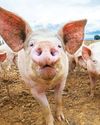
Big bum breakthrough
A team of researchers who found out that mammals can breathe through their bottoms have won a prize at the lg Nobel awards.

Should musicians stop touring?
Multiple concerts travelling around the world have a big impact on the environment.
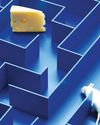
Animal awareness
What would it feel like to be another animal?
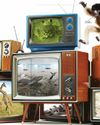
WILDLIFE WATCH
Ben Hoare goes on a safari from his sofa to discover how nature documentaries are made.
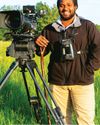
Hamza Yassin
Go behind the camera with a wildlife filmmaker.

The world's fastest charger fully powers smartphones in five minutes
Scientists have revealed the fastest battery-charging technology in the world for smartphones, which can fully charge a smartphone in less than five minutes.

Massive medieval coin hoard worth about 150 sheep' discovered
Archaeologists in Germany have unearthed over 1,500 medieval silver coins after a citizen noticed what looked like ‘small metal plates’ while digging during a construction project.

HOW TO ELECT THE PRESIDENT
The campaigns, votes and elections that put someone in America's most powerful office

Physicists solve a nuclear fusion.mystery with mayonnaise
Nuclear fusion technology could get a breakthrough from an unexpected place: mayonnaise. In a new study, scientists plopped the creamy condiment into a churning machine and set it whirling to see what conditions made it flow.

Deep-sea Arctic microbes may harbour next-generation antibiotics
The frigid waters of the Arctic may harbour the secret to a totally new type of antibiotic.

A new reactor could triple yields of a valuable chemical
A new reactor could turn wastewater into drinking water while also generating one of the world’s most sought-after chemicals.

NASA'S SOLAR SAIL SPREADS ITS WINGS IN SPACE
Over four months after launching to space, a solar-sailing spacecraft has spread its wings above our planet.

THE WORLD'S OLDEST PERSON DIES AGED 117 YEARS OLD
Maria Branyas Morera, the oldest person in the world, has died.

THE POWER OF WATER
We're hooked on fossil fuels. But hydroelectric power is becoming an increasingly important replacement for coal and oil

WHAT IS MORNING SICKNESS?
Why some pregnancies can cause nausea and vomiting

20 WEIRDEST SCIENCE MYSTERIES
From dark matter to deep-sea crabs, science still can't fully explain these strange quirks of nature

EXPLORING THE MOON'S CAVES
Earth's rocky neighbour is home to a network of unexplored caves, and scientists are keen to take a peek inside

Real-time brain stimulation slashes Parkinson's symptoms by half in trials
Brain stimulation that rapidly adjusts in real-time can dramatically reduce Parkinson’s symptoms, an early trial suggests.

THE TRIANGULUM GALAXY SHINES IN A NEW HUBBLE IMAGE
A nearby galaxy is shining with star formation in a new image from the Hubble Space Telescope.

The hottest ocean temperature in 400 years threatens the Great Barrier Reef
The Great Barrier Reef is facing the hottest sea surface temperatures in four centuries.

Albatross eating mice sentenced to death by 'bombing'
Invasive mice are eating albatrosses alive on a remote island in the Indian Ocean, so conservationists have come up with an explosive solution: ‘bombing’ the mice.

XB-1 PROTOTYPE ACES ITS SECOND TEST FLIGHT
Colorado-based company Boom Supersonic’s XB-1 supersonic demonstrator aircraft flew for the second time ever on 26 August 2024.

Guilt-Free Meat? - Should the world stop eating meat to tackle the climate crisis? Chris Baraniuk meets an experimental farmer who says we don't all have to become vegetarians
Should the world stop eating meat to tackle the climate crisis? Chris Baraniuk meets an experimental farmer who says we don't all have to become vegetarians. Livestock farming around the world is facing scrutiny because of its greenhouse gas emissions. Globally, the sector contributes somewhere between 11.1% and 19.6% of total emissions. Meat production is roughly twice as bad as the production of plant-based food, according to some analyses. And beef is the worst of all. Study after study has suggested that, in order to curtail the devastating effects of climate change, we ought to shift to a diet containing less meat - or even go vegetarian or vegan.
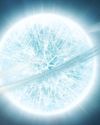
ZOMBIE STARS
+10 OTHER TERRIFYING SPACE OBJECTS

FUTURE TECH KANKOH-MARU
This ambitious reusable spacecraft will be capable of taking 50 people to and from orbit

THE FINAL FRONTIER
Beyond the reach of the Sun is a fascinating region of the cosmos that were only just beginning to explore
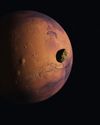
A long-lost moon could explain Mars' weird shape and extreme terrain
A long-lost moon could explain why Mars is so different from the other rocky planets in the Solar System. Today Mars has two tiny moons.
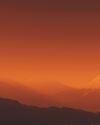
MARS LEAKS FASTER WHEN IT'S CLOSER TO THE SUN
The Red Planet has lost enough water to space to form a global ocean hundreds of kilometres deep

HOW TO BEAT LIGHT POLLUTION
Thought it was impossible to observe the wonders of the night sky from towns and cities? Think again. Follow our tips and tricks on successfully observing through sky glow